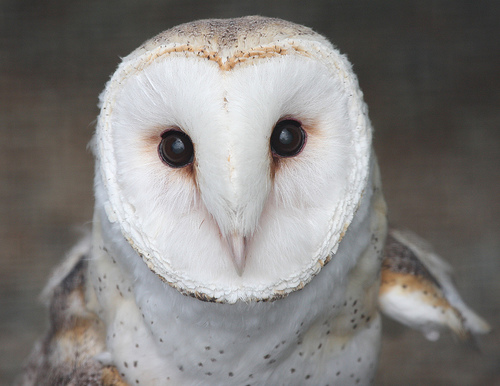Life History/Reproduction
The Barn Owl, along with other species of owls, breed in the Spring time. The breeding season is from March to August and it isn't uncommon for them to breed two times. Barn Owls court their mate by producing a call. The male will try to attract a female owl to a nest site with the use of calls or offerings of food (Baxamusa, 2011).
Owls are monogamous, which means there is only one female to each male and vice versa (www.ct.gov). They perform sexual reproduction and lay eggs (2-16) as opposed to giving live births. The eggs are in an incubation period from 29-34 days and the young Barn Owls emerge at about 52-62 days (Baxamusa, 2011).
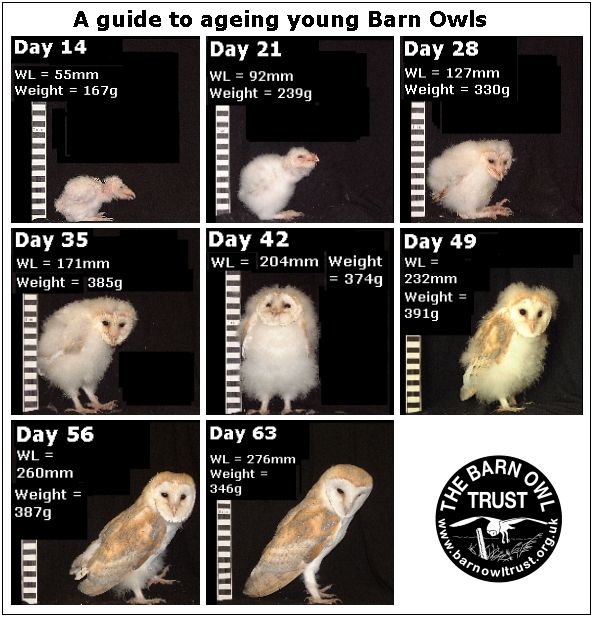
Here is an image from
barnowltrust.org depicting how the Barn Owl develops from the
age of 14 days to 63 days.
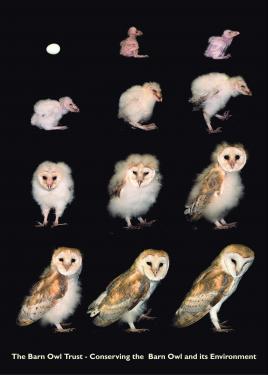
This is another image from
barnowltrust.org showing a more broader range of development in
the Barn Owl from egg to adult in 63 days.
The Barn Owl's life span is not very long. In fact, most of them die during their first year of life. The average life expectancy in the wild for these birds is about 1-2 years, however, it is recorded that a captive female held in England lived to be 25 years old (Lewis, 2012)!
There has been a study that wanted to see how far Barn Owls traveled during natal dispersal in relation to their coloring. What they found was that darker reddish Barn Owls flew further than paler owls during natal dispersal but not during the breeding dispersal. When looked at further it was found that the color of the biological and foster parents had no influence on dispersal distance. The distance traveled by parents and same-sex offspring was related, however, natal and breeding dispersal were not repeatable, meaning they were two different processes. In this study they wanted to know if genes for coloring were related to dispersal. Out of the 185 individuals that were studied the mean dispersal travel was 8.7±0.7 km for males and 11.2±0.9 km for females. The results also confirmed that darker reddish individuals dispersed further than the paler Barn Owls (Van Den Brink, 2012).
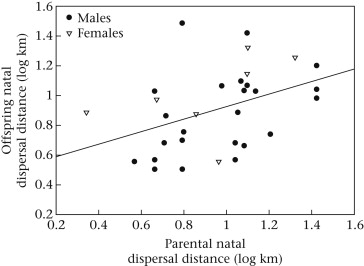
Here is a graph of the results that were
found with the relation between natal dispersal distance traveled of
parents, as well as their same-sex offspring (Van Den Brink, 2012).
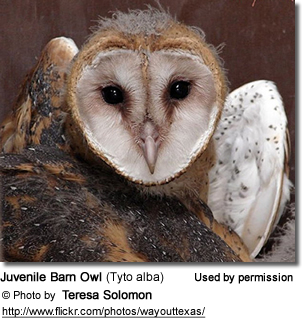
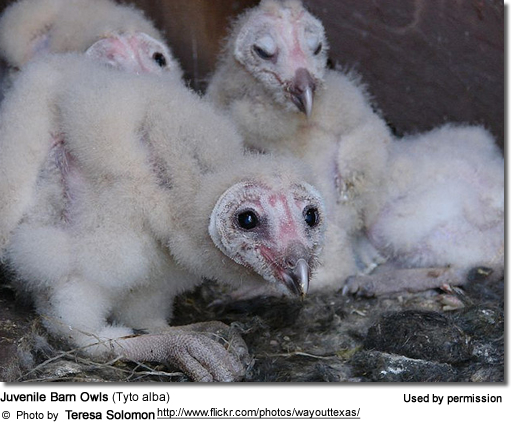
Habitat/Geography <--> Interactions
